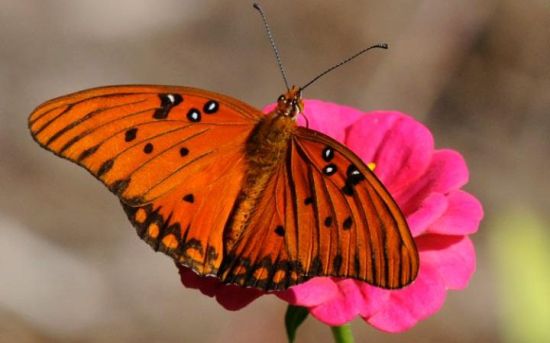A threatened butterfly could be helped after scientists cracked the secret of how its brain works.
Researchers believe they have discovered how the internal compass is used by the monarch butterfly to determine their south-west flight when they migrate each autumn.
Scientists have never understood how the monarch’s brain receives and processes information about its location and where they should fly.
But now it is hoped this discovery will help scientists understand how they navigate and locate their food.
Each year monarchs turn their orange, black and white-mottled wings toward the Rio Grande and migrate more than 2,000 miles to the warmer climbs of central Mexico.
Their journey is repeated instinctively by generations and has continued even as monarch numbers have plummeted due to loss of their sole food source – the milkweed plant.
Dr Eli Shlizerman, lead author of the study, joined with colleagues at the University of Michigan and the University of Massachusetts to show how the monarch’s compass is organised within its brain.
 The butterfly’s internal clock is centred in the antennae. Credit: AP
The butterfly’s internal clock is centred in the antennae. Credit: AP
Dr Shlizerman, who is an assistant professor at the University of Washington in the US, said: “Their compass integrates two pieces of information – the time of day and the sun’s position on the horizon – to find the southerly direction.
“We wanted to understand how the monarch is processing these different types of information to yield this constant behaviour – flying south-west each autumn.”
Monarchs use their large, complex eyes to monitor the sun’s position in the sky, but the sun’s position is not enough to determine direction.
Each butterfly must also combine that information with the time of day to know where to go. Continue reading . . .
SF Source Telegraph UK Apr 2016
[widget id=”text-44″]
